OK. I've been talking about the old Venetian fortress of Kotor, on the
spectacular Kotor Bay
(Buka Kotor
in the local language, which I must now call Serbian, not Croatian.
Balkan politics - yeesh.) Anyway, it is a lovely
clear cold
day after two days of near-biblical downpour, so let's go out and have
a look around.
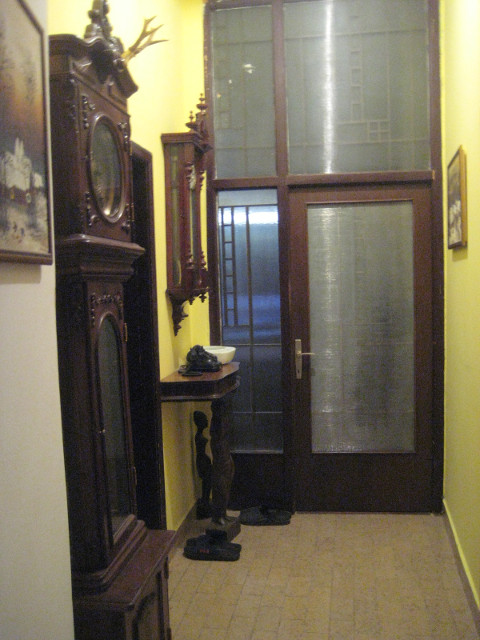
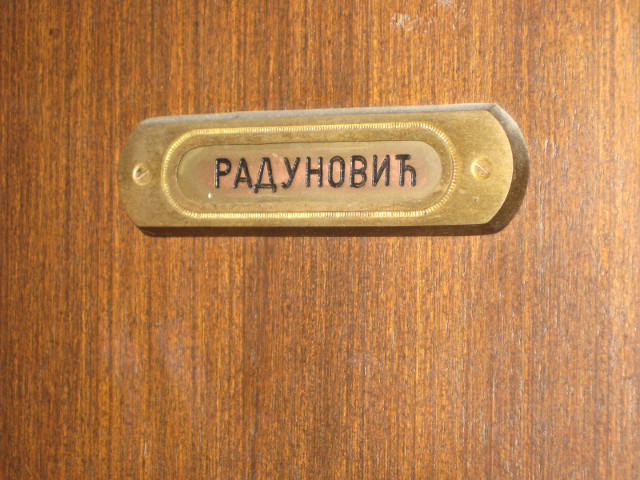
First thing we see
on leaving my room is my host family's entry (and exit) hall.
Turning back to lock the front door, the family name
is Radunović (Radunovich in case the accent-grave over the c
doesn't come through).
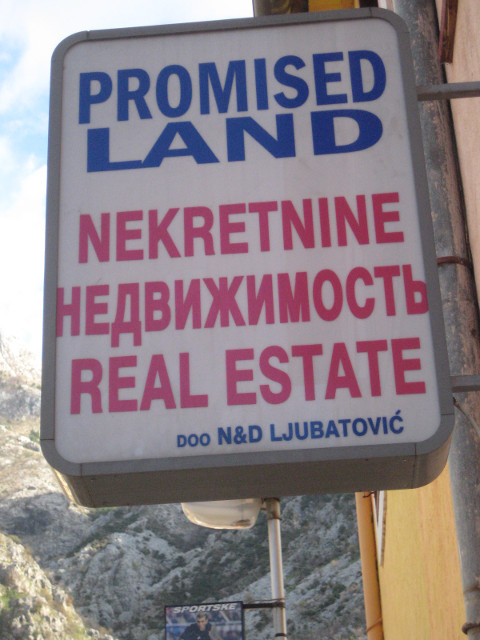 Cyrillic
and Latin
alphabets
seem to have equal status here in
Montenegro. All official signs are in latin, most businesses
too. Some newspapers are in one, some in the other.
Churches go by affiliation - latin for Catholics, cyrillic
for Orthodox.
Cyrillic
and Latin
alphabets
seem to have equal status here in
Montenegro. All official signs are in latin, most businesses
too. Some newspapers are in one, some in the other.
Churches go by affiliation - latin for Catholics, cyrillic
for Orthodox.
Side note: real estate
offices have multi-lingual signs,
usually including English, often German. To my surprise, I
noticed that the cyrillic word for real estate is not usually the same
word as the (latin alphabet) Serbian one. After
paying more attention I figured it out: that isn't Serbian in cyrillic
on
the real estate signs - it is Russian. Far as I remember off
hand, this is my first encounter with business signs in Russian.
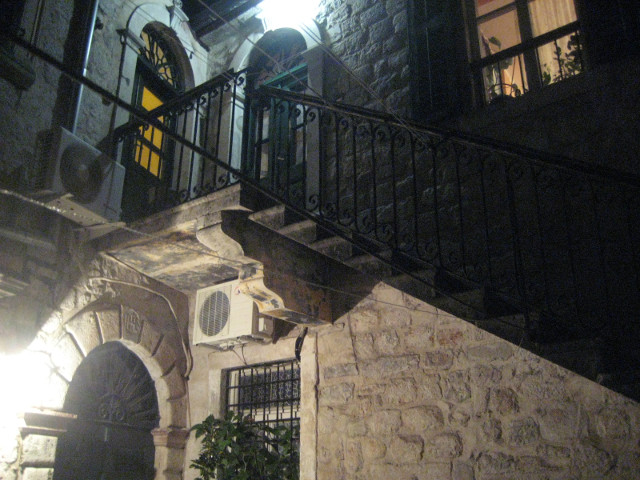
When I come back home at night, the way up the front steps look like
this.

Kotor Bay is
a finger of ocean that penetrates a gap in the first ridge of coastal
mountains,
and spreads out along the "inland" valley in front of the next, higher
ridge.
The city of Kotor is at the farthest (Southernmost) tip of this inland
finger.
From the battlements above the old town, you can see a bit of snow
remaining on the farthest ridge between here and the open sea, behind
the city of Herceg Novi
at the mouth of the bay.
There was heavier snow up there the day before.
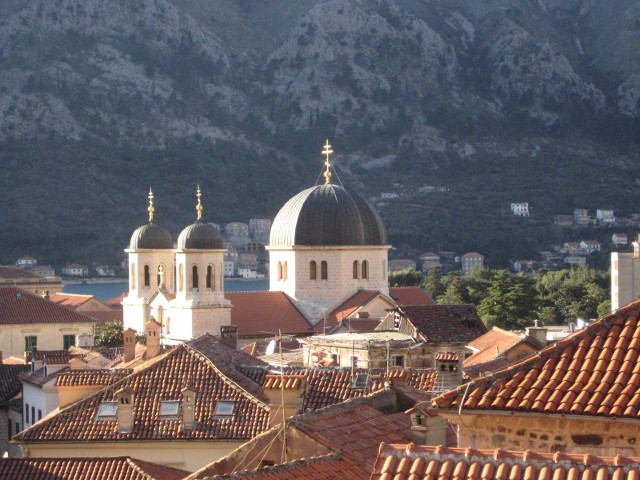

Watch your footing up here. Nobody maintains this path.
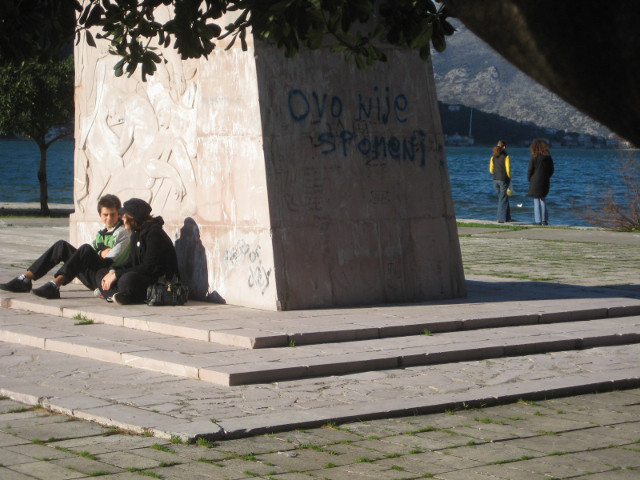
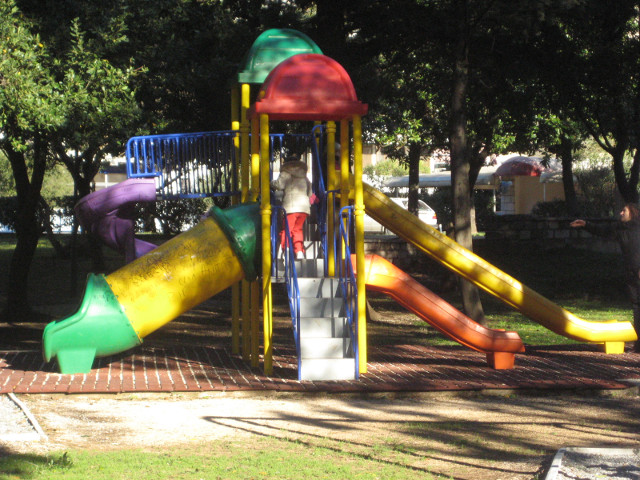
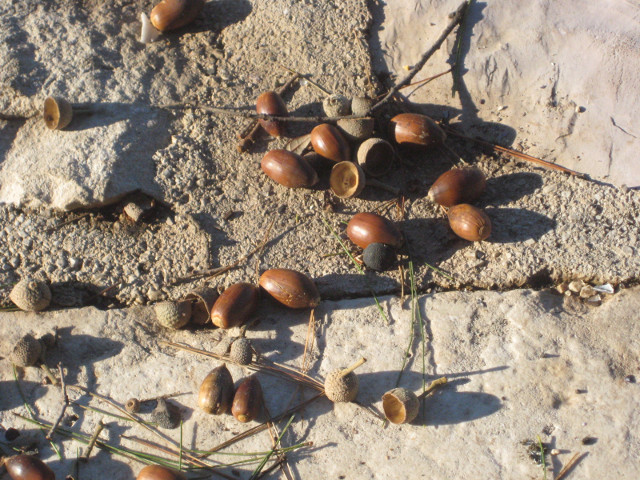
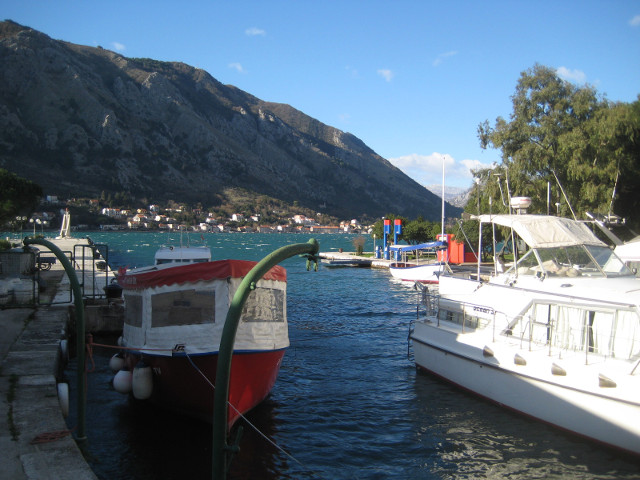
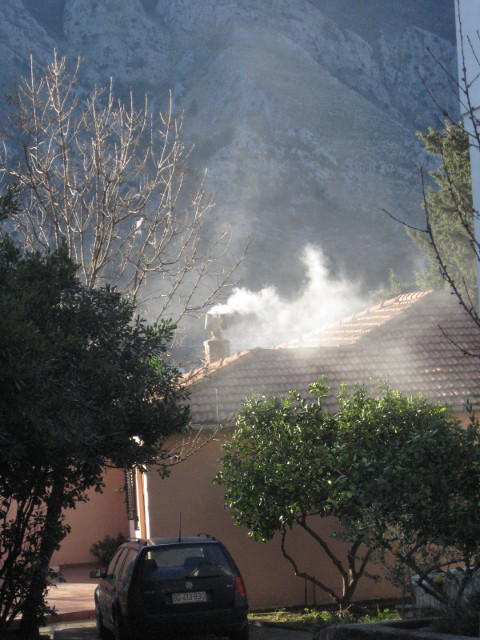
Down by the waterside, the scale of things is more human. Next to the
harbor, between the old city and the water is a park.
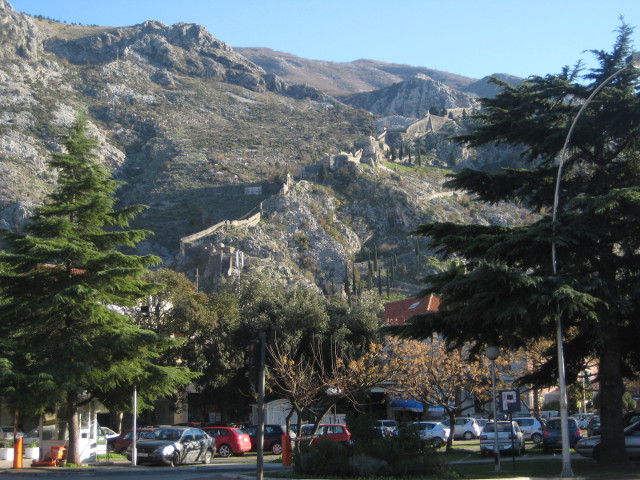
Contents Copyright 2012 Jeff Bulf


 Cyrillic
and Latin
alphabets
seem to have equal status here in
Montenegro. All official signs are in latin, most businesses
too. Some newspapers are in one, some in the other.
Churches go by affiliation - latin for Catholics, cyrillic
for Orthodox.
Cyrillic
and Latin
alphabets
seem to have equal status here in
Montenegro. All official signs are in latin, most businesses
too. Some newspapers are in one, some in the other.
Churches go by affiliation - latin for Catholics, cyrillic
for Orthodox.








